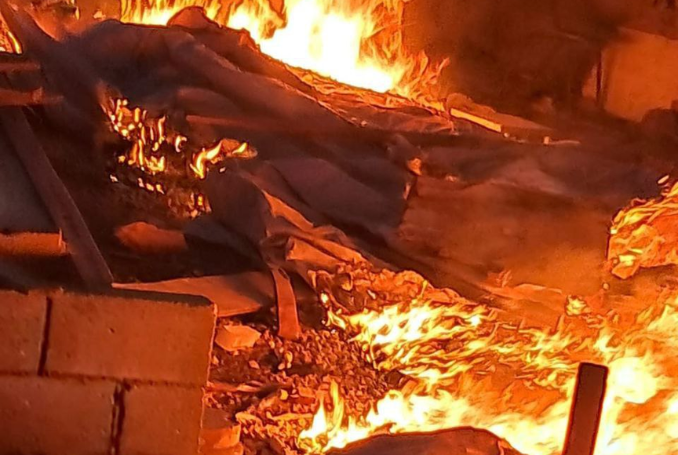Shootings in D.C.:
U.S./Israeli genocide in Gaza is the source of all violence – resistance is justified
WW statement
When evaluating the May 21 shooting in Washington, D.C., the past 19 months of Israeli aggression throughout West Asia and especially its slaughter of the civilian population of Gaza with hundreds of thousands of people now facing starvation must be front and center. In those 19 months, despite massive opposition across the U.S. and internationally, both the Democrat and the Republican administrations continued to arm this genocide and aggressively target those who protest.

Washington, D.C., Nov. 4, 2023. WW Photo: Joe Piette
We in Workers World Party believe that organizing for collective resistance is the most effective weapon against the daily violence of imperialism. But we should never separate ourselves from those who take an action that they are driven to carry out, regardless of the personal cost to themselves. This includes the killing of two Israeli Embassy employees, allegedly by Elias Rodriguez on May 21.
It is understandable that, like Aaron Bushnell did with his self-sacrifice over a year ago, others would be moved to take their own action in the hope of stopping these horrific U.S.-Israeli war crimes.
U.S. imperialism is a completely violent, repressive and brutal system. U.S. wars, invasions and occupations are responsible for the death of millions — in Korea, Vietnam, Central and South America, in Afghanistan, Iraq and Libya, in Yugoslavia and Ukraine in Europe and relentlessly for decades in Palestine, with the Israeli state as the willing killer.
The intentional violence of strangulating U.S. sanctions has threatened economic ruin to more than 40 countries, including almost all of the countries of West Asia — Palestine, Yemen, Syria, Lebanon, Iraq and Iran — and to Afghanistan and across Africa to Libya, Sudan, South Sudan, Ethiopia, Eritrea, Mali, Zimbabwe, to Cuba, Nicaragua, Venezuela and many others.
The U.S. imperialist state also exercises this violence within its borders. The U.S. today has the world’s largest prison population, on average three police murders every day and raids and round-ups of migrants — all while criminalizing and threatening to shut down every form of public mass opposition.
U.S. imperialism is the main funder of and provides the most arms to the horrific Zionist genocide we see daily on our screens.
You reap what you sow!
Acts of resistance, even individual acts, are inevitable and deserve support and defense, not lectures against individual violence in the midst of this genocidal, massive destruction.
The two slain employees of the Israeli Embassy in Washington, D.C., Yaron Lischinsky and Sarah Lynn Milgrim, were official representatives of the Israeli state. They are accountable for its genocide. While the corporate media practically presented the two as lovers of peace, they were fervent defenders of the non-stop Zionist violence in Palestine.
Lischinsky, a Christian Zionist and German citizen, enlisted in the Israel Occupation Forces. He has published tweets on X attempting to justify Israeli mass starvation, targeting of children and bombing hospitals, schools and U.N. convoys in Gaza. In other words, he cheered on the genocide.
Elias Rodriguez stated in a manifesto explaining his act of political protest, “The atrocities committed by Israelis against Palestine defy description and defy quantification.” He shouted, “Free Palestine!” at the scene. (For Rodriguez’s statement, see workers.org/2025/05/85786/)
All acts of resistance to the genocide in Gaza, a genocide exposed to the world, deserve to be defended by the movement as a whole.
Let’s focus all attention on the source of the violence — U.S. imperialism and its violent proxy force, Zionism.






